- Home
- Paul Christopher
The Templar Throne Page 2
The Templar Throne Read online
Page 2
“All the time,” answered Holliday. “I came by it honestly, though; I do have a Ph.D.”
“In what?”
“Medieval history.”
“Which explains why you’re looking for me all over France.”
“How did you know I was looking for you?”
“I may wear a monk’s robe, Mr. Holliday, but that doesn’t prevent me from having a cellular telephone. Your reputation precedes you, courtesy of Société Française de Radiotéléphone.” Morvan stood up and dusted off his robe. He appeared to be in his early to mid-sixties. “How did you lose the eye?” he asked, nodding at the patch over Holliday’s right eye.
“A piece of gravel on a back road in Afghanistan.”
“So presumably it wasn’t always just plain ‘Mister’ Holliday.”
“What makes you say that?”
“Afghanistan from the twelfth century to the fifteenth was effectively under the rule of people like Genghis Khan and Tamerlane. Not much to interest a medievalist. Also you have an officer’s bearing.”
“You’re good,” said Holliday, laughing.
“My cell is a BlackBerry,” answered the monk. “I Googled you, Colonel Holliday. Your specialty is medieval arms and armor. What brings you to a cathedral? There are a few dead knights entombed here, but any swords are carved in stone.”
“I use a BlackBerry, too,” Holliday said with a smile. “Maybe I should have Googled you first. Anyway, I’m looking for one knight in particular. A Templar named Jean de Saint-Clair.”
“Interesting,” said the monk. “Walk with me.”
Morvan didn’t wait for an answer. He headed back down the nave and then turned toward an open side door. A few moments later Holliday found himself in a small graveyard, an alleyway of ancient granite mausoleums, the stones old and worn, most of the inscriptions faded away to nothing.
“There are a great number of artisans buried here,” said the monk. “The man who crafted the Abraham Window in the cathedral, for instance, the so-called Abraham Master.” He stopped at a simple square mausoleum and rested his large gnarled hand on the old gray stone. There was the indistinct image of some strange beast over the door. A cat perhaps? “The image is the lion of St. Mark, the patron saint of stained-glass painters,” explained Morvan. “It is the only means we have to identify him, but six hundred years after his death we still see his work as though it was created only yesterday. It is living history, the very imagination of a single human being.”
“I know what you mean,” Holliday said and nodded. “I can go to some places that seemed soaked in history. You can almost breathe it in like perfume. Some battlefields are like that. There is graffiti on the walls of a brothel in Pompeii that’s two thousand years old.”
“Art endures is the lesson, I think. Businessmen are rarely remembered much past their time. No one remembers Michelangelo’s patrons, but they remember the man. The Mona Lisa’s smile endures, the pyramids still stand. It’s the reason I joined the Tironensian Order.”
“Because of their association with Freemasonry?”
“Not just the Masons,” said Morvan. “It was a community of artisans. ShipWalkers, or shipwrights, glassblowers, goldsmiths, stonecutters, craftsmen of all types. Creators of things that lasted. It seemed to me the greatest expression of God’s immortality, what he had given man to express infinity:To see a world in a grain of sand
And heaven in a wildflower
Hold infinity in the palm of your hand
And eternity in an hour
“William Blake wrote that two hundred years ago but it’s still quoted today.”
“I’m not sure why that makes my question about Jean de Saint-Clair interesting,” said Holliday.
“Jean de Saint-Clair, also known as John Sinclair, was born in Saint-Clair-sur-Epte, the son of a master shipWalker. He ran away to sea, became a knight, joined the Templars, carried men and supplies to the Crusades and disappeared during the dissolution of the order in 1312. He returned to France and specifically to Saint-Clair-sur-Epte in 1332 with a dispensation from Pope Gregory IX, the man who introduced the world to the Inquisition, by the way. Saint-Clair was one of a very few Templar knights to survive the dissolution. Most of the others were simply murdered or burned at the stake. He joined the monastery at the Abbaye de Tiron and spent the next twenty years in seclusion. When he died, a group of monks from the Abbey of Mont Saint-Michel appeared, pickled him in a barrel of Calvados apple brandy and took him to the island abbey, where he was then interred. His tomb bears the inscription et in arcadia ego, which has a number of translations, the most popular being ‘I lived in Arcadia.’ Both The Da Vinci Code and Holy Blood, Holy Grail use the phrase in relation to the bloodline of Christ, which of course is utter nonsense on a par with the discovery of Piltdown Man. But that’s not why your question was interesting.”
“Do tell,” said Holliday.
“What is truly interesting is the fact that you are the second person this week who’s asked me about Jean de Saint-Clair.”
“Really.”
“Really,” Morvan said, nodding.
“Who was he?”
“Not a he at all. A she. A nun from the Convent of St. Agnes of Prague. Her name is Sister Margaret Emily.”
“Not a very Czech name.”
“From her accent I’d say the American South. Mississippi or Alabama.”
“Why is she interested in Jean de Saint-Clair?”
“Apparently she’s writing a definitive history of the convent for a Ph.D. thesis at Notre Dame. Saint-Clair’s name came up in her research.”
“Apparently?”
“In my experience a great many people lie,” said Morvan, trying to keep his voice neutral.
“You think she was lying?”
“I didn’t say that.”
“But you must have thought it or you wouldn’t have mentioned it.”
“Perhaps.”
“A lying nun. Now that’s interesting.”
3
Mont Saint-Michel is a Walt Disney-style Fantasyland Castle, monastery and abbey on a tiny, rocky island half a mile off the Normandy Coast close to the mouth of the Couesnon River, not far from the town of Avranches. Once upon a time the narrow causeway connecting the island to the mainland was covered by the exceptionally high tides, but over the centuries the causeway has been built up so that the little island is always accessible.
The eleventh-century fortress and Benedictine refuge has been commercialized in direct proportion to its elevation. The lower levels of the island are crammed with overpriced souvenir shops, mediocre family hotels and expensive restaurants serving second-rate foods. By the time you reach the abbey and the top of the grand degré, the main staircase, you are back in the land of the pure and holy. There is one exception to this rule.
On the back of the island, away from the crowds and facing the sea, was a single-roomed chapel, nothing more than four stone walls and a slate roof. It was the Chapel of St. Aubert, named for Saint-Michel’s founder and one of the oldest existing structures on the island.
The exterior walls are crusted with barnacles, the stones battered by seventeen centuries of pounding storms. It is only a few yards away from the original stone breakwater that once served as the island’s port of entry. There is nothing between the chapel and the sea. Worn to near anonymity, a small granite statue of Bishop Aubert stands on the simple peaked roof, his back to the empty ocean.
The old wooden door of the chapel sagged outward, allowing a long drift of sand and dirt to creep in across the stone floor. It looked as though no one had been there for a very long time.
Holliday stepped into the chapel, his feet crunching on the sand and small shells blown in through the entrance. The new Nikon D3 he’d picked up for the trip to France hung from his shoulder. He’d been guided there from the abbey by several black-robed monks.
She stood at the far end of the bare room, contemplating the stone effigy of a knight that stood as the
cap on a simple stone sarcophagus. Even in her simple gray skirt and jacket and black head covering she was striking, not quite beautiful in the classic sense but extraordinary-looking just the same, a hint of bright red hair peeking out from beneath the head scarf, a scattering of freckles across the bridge of her elegant, finely sculpted nose and a wide, full mouth. Holliday approached her and she looked up as he came nearer. Her eyes were pale-lashed and large, the irises a strange gray-green color. She looked as though she was in her late thirties, faint crow’s-feet only just beginning to show.
He smiled, trying to put her at ease. She looked back at him curiously.
“May I help you?” she said. He bristled a little at the question. She made it sound as though the chapel was her private preserve.
“Just looking around,” he answered. He stood beside her at the foot of the sarcophagus. The knight’s effigy was a little strange; the figure was half turned, the right knee bent as though he was climbing a stair, the shield held to one side. On his surcoat was the clear design of a Templar cross, engrailed. The figure itself was covered in detailed chain mail from head to toe. At the feet was a stone plaque that read In Arcadia Est.
“There’s not much here in the way of photo opportunities,” said the woman, eyeing the big camera.
Just to annoy her, Holliday slipped the Nikon off his shoulder and clicked off a few shots of the knight. Then he turned quickly and took a shot of the woman herself. Her expression darkened and she frowned, her hands balling into fists at her side.
“I beg your pardon?”
“Afraid I’m going to steal your soul?” Holliday grinned.
The woman scowled. “Certainly not. You took my photograph without permission. That’s an invasion of privacy.”
“So this is your private chapel?”
“I’m not a tourist. I’m doing historical research.”
“Who says I’m not doing the same?”
“I have a master’s degree in the history of religion from Harvard,” she snapped. “What’s your degree in?”
“Medieval history. I have a doctorate from Georgetown University. Ph.D. trumps M.A. Beat you,” Holliday said and laughed.
The woman turned beet red. “Is that true?”
“Would I lie to a nun?” Holliday answered, still laughing. “If I did, my old teacher Sister Claudille would come down from heaven and whack me across the back of the head with her special whacking- over-the-head ruler.”
The gray-green eyes widened. “How did you know I was a nun?”
“Elementary, my dear Watson, you’re wearing a modern ‘Urbanist’ Clare habit, black and gray. From the cut of the skirt I’d say it was one of the eastern European convents. Agnes of Prague, perhaps. Korektní?”
She looked totally flabbergasted.
“That’s impossible!” she blustered. “You couldn’t know all that!”
“And I couldn’t know that this was the grave of Jean de Saint-Clair,” said Holliday blandly. “Or that your name is Sister Margaret Emily.”
The nun stared at him. After a moment her expression hardened.
“Brother Morvan,” Sister Margaret Emily said, finally figuring it out.
“Bingo.”
“Exactly who are you?” Sister Margaret Emily said frostily. “And what were you doing talking to Brother Morvan?”
“You’ve got quite the proprietary tone going for you there, ma’am,” said Holliday. “Do you own Brother Morvan as well as the chapel?”
“I’m not a ma’am and I spoke to Brother Morvan in confidence.”
“Your name is a state secret?” The young woman was getting under his skin. She was beginning to remind him of “Hot Lips” Houlihan on M.A.S.H., at least as far as her haughty attitude was concerned.
“I’m usually called Sister Meg,” said the woman primly. “And you are?”
“John Holliday, U.S. Army, retired. My friends call me Doc.”
“I wasn’t aware that the army employed historians,” said Sister Meg.
“Quite a few of them, actually,” replied Holliday. “You know the old saying, ‘those who ignore history are doomed to repeat it.’ ”
“George Santayana,” said the nun.
“The army takes it quite seriously. Ignoring history leads to things like invading Russia in winter or taking big hollow horses into walled enemy cities. In my case, I taught the history of warfare at West Point.”
“One of my ancestors went to West Point,” said the nun, a hint of pride in her voice. “He was a general.”
“Which one?” Holliday asked.
Sister Meg waved a dismissing hand. “It doesn’t matter.” She pointed down at the effigy of the knight. “Why are you interested in Jean de Saint-Clair?”
“He discovered a nautical instrument that gave the Templars a great advantage at sea. He may well have traveled as far as North America.” He smiled. “I’m not quite sure why a nun would be interested in a man like him.”
“The Convent of St. Agnes was founded in 1232 by Princess Agnes, a niece of the king of Bohemia,” explained the nun. “She died in 1282. Before she died she entrusted a relic to the care of her own niece, the Blessed Juliana. The relic is known as the True Ark.”
“As in Noah or the Ark of the Covenant?”
“Neither,” said Sister Meg. “In Latin the word for ‘chest’ is arca. Over time the word has been invested with far more meaning than it really should. It simply means ‘box.’ The True Ark is the single most important religious relic in the world with the exception of the bones of Christ himself. I’m going to find it.”
“Presumably there’s something inside this ark of yours,” suggested Holliday.
“There is,” said the nun. “Historically the contents of the box were thought to have been the Holy Grail, the Crown of Thorns, the Holy Shroud, and the Ring of Christ.”
“The main event,” said Holliday.
“The fourteenth century was the age of relics,” said the nun. “The True Cross, the Shroud of Turin, the bones of various saints. Whatever was in the box was felt to be significant.”
“So Juliana gave it to Saint-Clair?”
“Yes. Juliana had been married to a member of the French royal family. When he died she was betrothed again, this time to a man she did not love, a cousin of King Philip who was also a bishop. Part of the dowry was the True Ark. Rather than marry the bishop and lose the ark she fled, with Jean de Saint- Clair’s help. According to the stories he was the greatest navigator of his time. They vanished for a number of years. From 1307 to 1314.”
“Interesting,” said Holliday. “Saint-Clair was a Templar. The order was proscribed by King Philip in 1307. Saint-Clair would have been on the run from the king’s men.” Holliday paused. “Was it some sort of elopement? Were this Juliana and Saint-Clair lovers?”
“There is no evidence of that,” said the nun coldly.
“What happened when they came back?”
“Jean de Saint-Clair reappeared in December of 1314, at the monastery of the Abbaye de Tiron in the town of Saint-Clair-sur-Epte. The Blessed Juliana joined the Convent of St. Agnes in Prague on Christmas Day of the same year.”
“Good timing,” said Holliday. “The Templars’ two greatest enemies, Pope Clement and King Philip, both died in 1314; the Pope in April, the king in November. What about the ark?”
“There is no record of either Jean de Saint-Clair or the Blessed Juliana ever mentioning it again. Jean de Saint-Clair lived out his life as a monk and the Blessed Juliana became mother superior at the convent.”
“They never saw each other again?”
“Not according to the convent archives.”
“And the ark?”
“No one knows.”
“A mystery then.”
“It would seem so,” said Sister Meg primly.
“Interesting,” murmured Holliday, looking down at the sarcophagus.
“What is?”
“He’s buried as a knight, not a monk. The word
ing on the plaque at his feet doesn’t tally with the monastery at Tiron, either. It would have been more likely to have had a Mason’s symbol—a compass and a square maybe—not an inscription in Latin. In Arcadia Est.”
“In Arcadia I am,” sad the nun, translating literally.
“Very Yoda-ish,” said Holliday. “But what does it mean, exactly?”
“Arcadia was the romantic ideal during the Renaissance,” replied the nun.
“But not in 1314,” answered Holliday.
“Originally it was a Greek province,” said Sister Meg. “It still is.”
“Unlikely Saint-Clair would mention it on his grave.”
“Then what?” Sister Meg said.
“It was the original name for the maritime provinces of Canada,” said Holliday. “The first French settlers there—from around here actually—were referred to as Acadians. When they were thrown out by the English in 1775 a lot of them went to Louisiana. It’s the origin of the name Cajun—Acadian with the A knocked off.”
“Making history fit into your theory,” said Sister Meg, the expression on her face not quite a sneer.
“If the shoe fits,” Holliday said with a shrug.
“I’m not sure that it does.”
“And I’m not sure that it doesn’t,” snapped Holliday. “Have you got a better idea?”
“Maybe it doesn’t mean anything at all,” said Sister Meg. “I’m certainly not going to Canada on a silly whim and a story about Cajuns.”
“How about Prague?” Holliday responded.
“Excuse me?” Sister Meg said.
“You said your convent had archives,” replied Holliday.
“Very complete ones, as a matter of fact. Although the old convent itself is now part of the National Gallery.”
“Can you get us into the archives?”
“Us?”
“Why not? We both want to know what happened. I want to know where Saint-Clair went and you obviously want to know what happened to the ark, right?”
“I’m not sure it would be proper,” said Sister Meg. She flushed again. Holliday couldn’t help smiling. Innocent women didn’t blush that easily. Either Sister Margaret Emily had a very fertile imagination for a nun or she had a past. She saw the smile and the blush became even darker. She scowled again angrily. “What are you smiling about?”

 Wisdom of the Bones
Wisdom of the Bones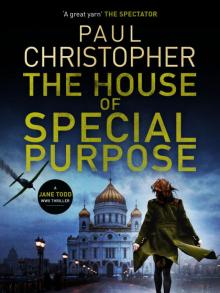 The House of Special Purpose
The House of Special Purpose The Second Assassin
The Second Assassin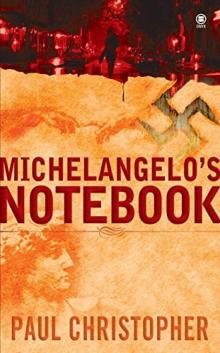 Michelangelo's Notebook
Michelangelo's Notebook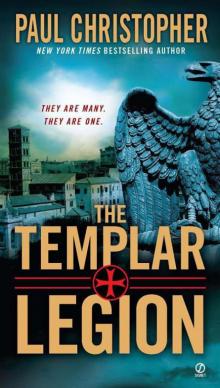 Templar Legion
Templar Legion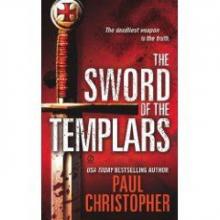 The Sword of the Templars t-1
The Sword of the Templars t-1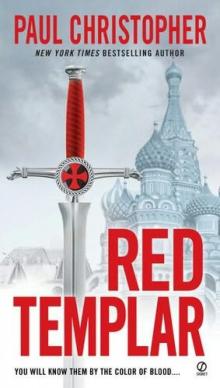 Red Templar
Red Templar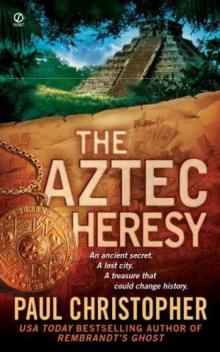 The Aztec Heresy
The Aztec Heresy The Templar Legion
The Templar Legion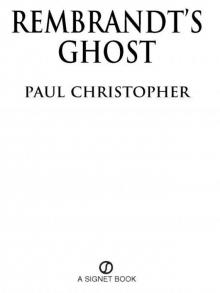 Rembrandt's Ghost
Rembrandt's Ghost Sword of the Templars
Sword of the Templars The Templar throne t-3
The Templar throne t-3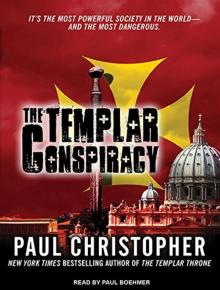 The Templar Conspiracy
The Templar Conspiracy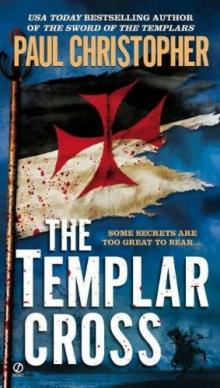 The Templar Cross t-2
The Templar Cross t-2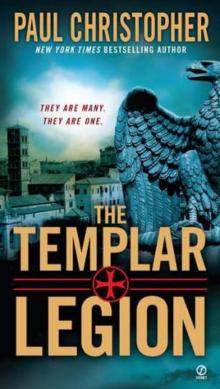 The Templar Legion t-5
The Templar Legion t-5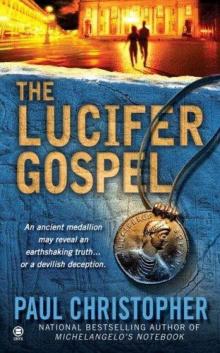 The Lucifer Gospel
The Lucifer Gospel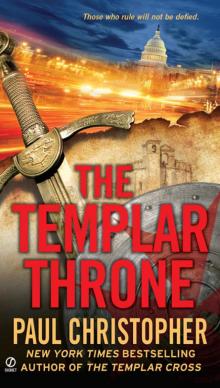 Templar Throne
Templar Throne Michelangelo_s Notebook fr-1
Michelangelo_s Notebook fr-1 The Lucifer Gospel fr-2
The Lucifer Gospel fr-2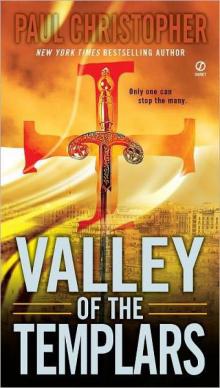 Valley of the Templars ts-7
Valley of the Templars ts-7 Valley of the Templars
Valley of the Templars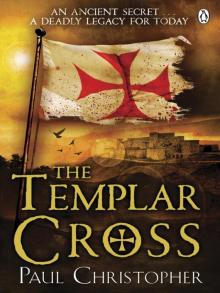 Templar Cross
Templar Cross The Templar Throne
The Templar Throne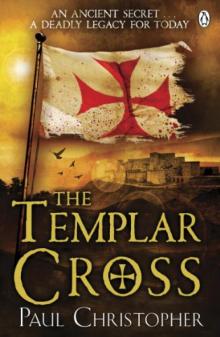 The Templar Cross
The Templar Cross Lost City of the Templars
Lost City of the Templars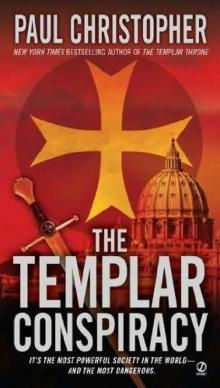 The Templar conspiracy t-4
The Templar conspiracy t-4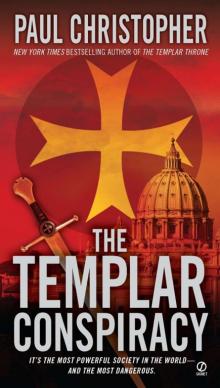 Templar Conspiracy
Templar Conspiracy